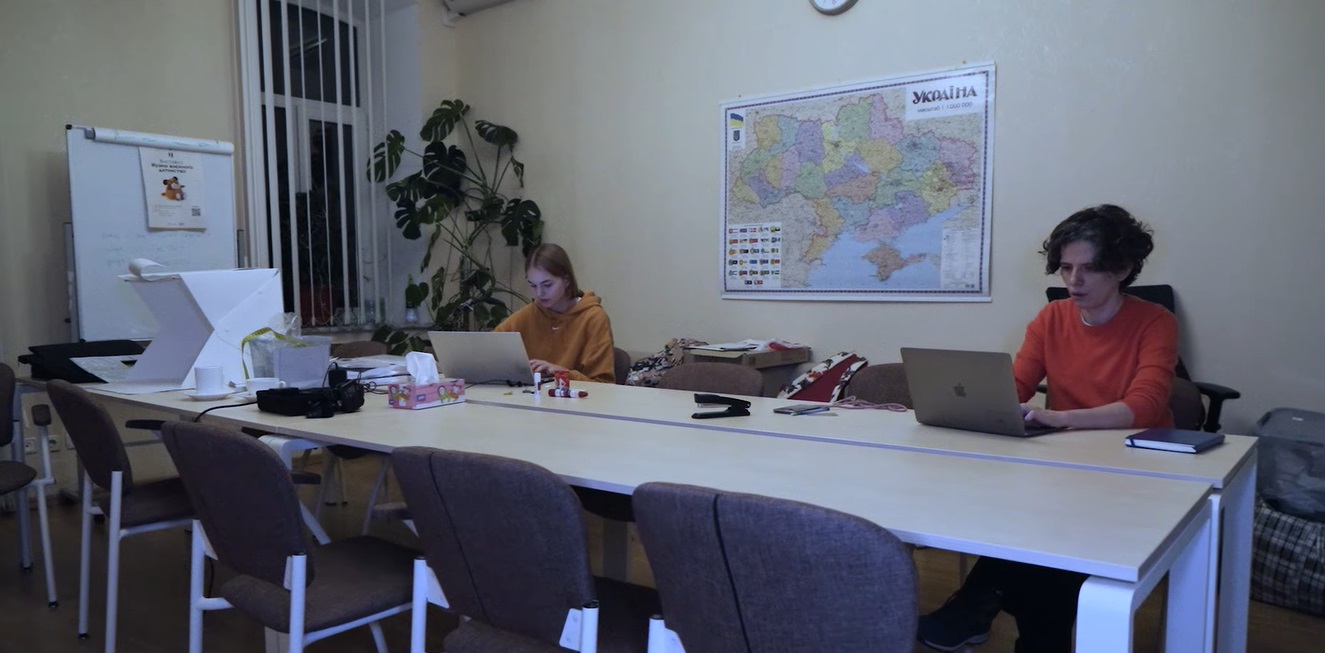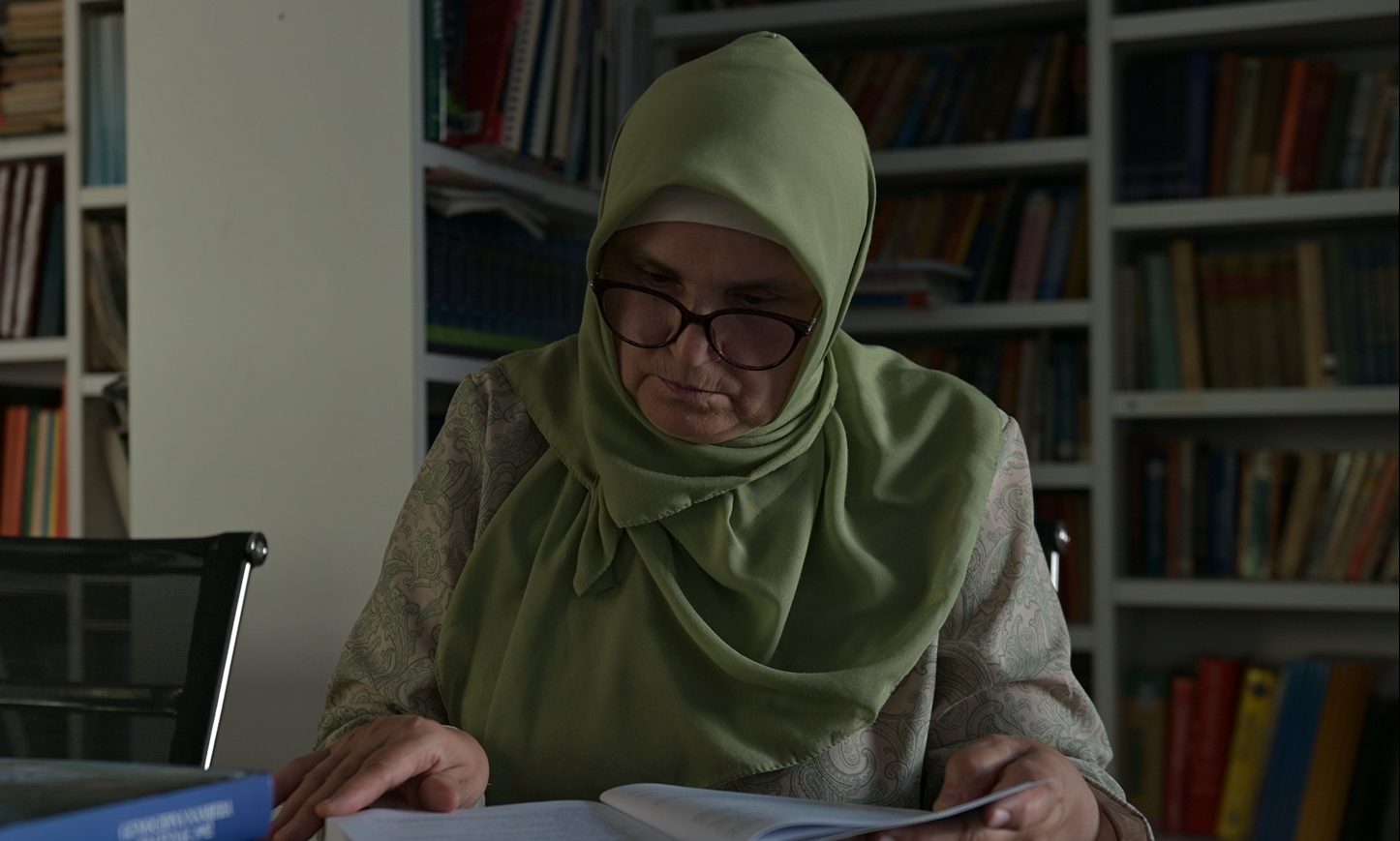This post is also available in: Bosnian
The War Childhood Museum’s director Svitlana Osipchuk explains that it was modelled on the museum of the same name in Sarajevo Museum and aims to gather the stories of children and teenagers as the war continues.
“In the beginning, we were only focused on documenting. A lone woman investigator collected testimonies of children from the Luhansk and Donetsk regions , near so-called ‘grey zone’ , and with her help, we collected the first part of the history,” Osipchuk recalled.
“After that, it was decided that the moment had come to establish an office and then the museum, and the first big exhibition in Kyiv in 2021,” shes said, adding that 15 people now work at the museum now, including eight researchers.
However, unlike the museum in Sarajevo, still have no permanent exhibition, although temporary displays have been exhibited around the country.
Osipchuk explained that a major difference between the two institutions in Bosnia and Ukraine is that the Sarajevo museum collected the stories and artefacts of adults who were children during the 1990s war, while in Ukraine, they are talking to children while the war is still underway.
Children have been victims of the Russian invasion in various ways. In mid-2023, the Russian authorities claimed that 700,000 children from Ukraine had been “evacuated to Russia”. The Ukrainian authorities argue that these were not humanitarian evacuations but illegal deportations or abductions.
Last March, the Hague-based International Criminal Court issued arrest warrants for Vladimir Putin and Russia’s children’s commissioner Maria Lvova-Belova for the war crime of unlawfully deporting children from areas of Ukraine occupied by Russian forces. According to the United Nations, about 1,800 children have also been killed or injured since the full-scale invasion began.
Sensitive questions
 Museum office in Kyiv. Photo: BIRN BiH
Museum office in Kyiv. Photo: BIRN BiH
Jasminko Halilovic, general manager of the War Childhood Museum in Sarajevo, said that the Bosnian museum started operating internationally soon after it opened in 2017. After documenting the experiences of children in Lebanon and of refugees from Syria, Ukraine was next.
“Given that millions of people had already been displaced throughout Ukraine at that moment, we started working with internally displaced children and young people in different parts of the country,” Halilovic recalled.
“Due to the need to coordinate the process, we opened an office in Kyiv in 2020. So at the time when the invasion began, we had a collection and archive in the Kyiv office, travelling exhibitions and a dedicated team working on further documenting the experiences of people whose childhood was marked by the war in eastern Ukraine, which began in 2014,” he added.
Halilovic said that when the full-scale invasion started in February 2022, it was not immediately clear whether Kyiv would fall to the Russians, whether it would be possible for the museum team to leave the country, and whether they would be able to save the collection.
“We managed to evacuate both the team and the collection, and later some team members and the collection went back to Kyiv,” he said.
Osipchuk said that the museum tailored the questionnaire it uses to gather testimonies from children to take into account the fact that are still processing the traumas they have been through.
“The Kyiv museum’s questionnaire contains questions about children’s day-to-day life – how they play and go to school, about hobbies, changes in their community, forcible resettlement, about food, heating, the conditions in shelters,” she explained.
“We don’t ask about extreme experiences – our approach is such that we avoid additionally traumatising the children,” she said, adding that the testimonies are all gathered with mandatory parental consent.
Besides the testimonies, items like toys and personal belongings are also part of the museum’s collection. “Our collection already contains more than 500 exhibits and it is surely one of the most remarkable documents of a major war in Europe,” Halilovic said.
One of the toys in the collection is a teddy bear donated by a boy named Oleksii, who had kept it by his side while recovering in hospital after being wounded by an unexploded device and losing two fingers.
“Whenever I would hear shootings, I would curl up to the wall next to my bed and hug this teddy bear,” Oleksii told the museum’s researchers. “As long as I slept with it, I felt that everything was going to be OK.”


